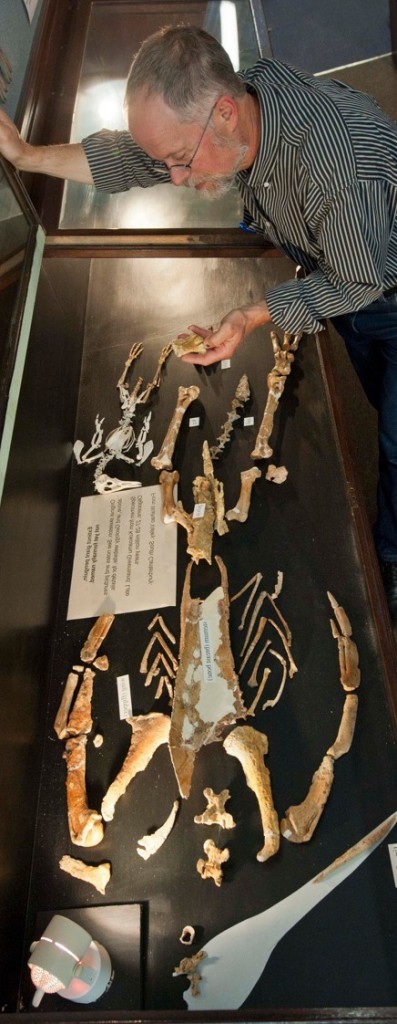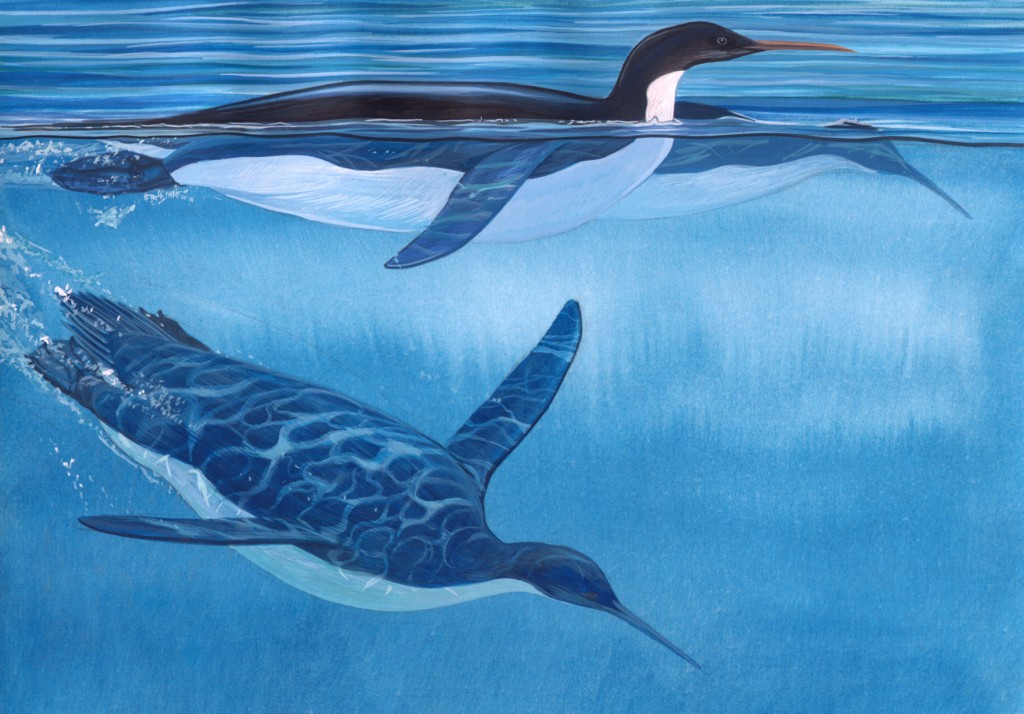
Fossils found on the East coast of New Zealand have been used to reconstruct the skeleton of an extinct prehistoric penguin, believed to be far heavier and taller than modern penguins.
The giant penguins stood 1.3 metres tall – 30 cm taller than its nearest modern-day rival, the Emperor Penguin, of Antarctica. With its spear-like bill, it weighed at least 60 kilograms, which is 50% heavier than the Emperor Penguin. Scientists have dubbed the species Kairuku – a Maori word loosely translated to “diver who returns with food”.
Prof Ewan Fordyce from the University of Otago Geology department, who led the reconstruction, discovered the first of several penguin fossils used “by chance” in a cliff near Waimate, South Canterbury, in 1977 when he was still completing his PhD. Since then, several other fossils have been found and stored in the Geology Museum at the University of Otago.
Dr. Dan Ksepka, of North Carolina State University, was invited to Dunedin to aid in the reconstruction of the giant penguin, which probably became extinct from its New Zealand habitat between 24 and 25 million years ago.
In 2009 and 2010, Fordyce and Kespa, along with several others, worked to piece together an incomplete skeleton of the penguin using a king penguin as a model. Their results appear this week in the Journal of Vertebrate Paleontology, with an artists rendition of the massive penguins featuring as the journal’s cover image.
“Kairuku was an elegant bird by penguin standards, with a slender body and long flippers, but short, thick legs and feet,” says Ksepka. “If we had done a reconstruction by extrapolating from the length of its flippers, it would have stood over 6 feet tall. In reality, Kairuku was around 4-feet-2 inches tall or so.”

Dr Fordyce says New Zealand has a history of producing exceptional fossils that give important insights into the history of penguins and other marine creatures.
“When the penguins lived about 27 million years ago, New Zealand seas probably offered a rich supply of food, with good nesting sites nearby. The penguin skeletons were buried in quiet conditions, without being broken apart by waves and currents. As a result, the fossils are well preserved and complete,” Professor Fordyce says.
The ancient penguins have made quite a splash in the New Zealand media. Examples include:
Stuff.co.nz: The four-foot penguin of NZ’s past
TVNZ: Scientists reconstruct ‘tall, elegant’ New Zealand penguin
3 News: NZ home to prehistoric giant penguins
Radio New Zealand: Fossilised bones reveal giant prehistoric penguin
The immense penguin has also been making waves abroad with high-profile overrseas coverage including:
BBC News: Big NZ fossil penguin reconstructed
Wired Science: Giant Prehistoric Penguins Stood Nearly 5 Feet Tall
National Geographic: Giant Prehistoric Penguins Revealed: Big but Skinny
Scientific American: Giant Prehistoric Penguin was Bigger Than an Emperor
ABC Science: Tallest, fattest penguin found
New Scientist: Fossil penguin may have been tallest ever
Christian Science : World’s tallest penguin used to live in New Zealand, fossils show
Sydney Morning Herald: Penguin discovery